

Algonquin Highlands has an interesting history of people whose tenacity found them waging a hardscrabble battle with Mother Nature. Logging was short-lived, farming was a rocky challenge and tourism is what finally opened up the floodgates. Come and peek into our past and meet some fascinating souls.
This heritage of our township comes from the unique histories of our individual communities: Carnarvon, Stanhope, Dorset and Oxtongue Lake.
Carnarvon today is but a crossroads of two highways straddling Algonquin Highlands and its neighbour to the south, Minden Hills. Yet beyond the stoplight and the handful of businesses is a settlement originally called Brown's Corners where the original "union school", Fry's blacksmith shop and Rogers' Store lie quietly waiting to tell their stories, where creative businesses flourish in these re-purposed buildings and where an entire generation grew up at Medley's Dance n' Dine.
Stanhope remains the "township without a town"; a community of loggers and farmers where the absence of a village forced people to create their own sense of community. Home of the Hawk Lake Log Chute, famed racehorse Guilford Bay and myriad colourful characters, the Stanhope area of Algonquin Highlands is the headwaters of the Trent-Severn Waterway and is a picturesque and storied community of toil, innovation, tenacity and creativity.
Dorset is the township's only real town and has the interesting (and challenging) situation of being split in half by the boundary line between Algonquin Highlands and Lake of Bays townships. Its settlement history goes back to 1859.
Dorset's story is steeped in its waterways where the legendary Royal Mail Ship steamboats of the early 1900s plied their trade to the grand old hotels such as the Bigwin Inn. At its height the town boasted five hotels, three stores, three churches, two sawmills, and one jail. The area's culture was based on a tough and self-sufficient style of people: farmers, loggers, fishers, carpenters, guides and mid-wives. Today its culture is embodied by the Dorset Lookout Tower, the rebirth of the Bigwin Steamship and a deep and multi-generational love of the town by seasonal visitors.
At Oxtongue Lake, people initially settled the area to service the huge lumber companies in the Algonquin region and as a result, a small community sprang up around those services. The rugged hinterland was an attraction to the likes of department store founder Timothy Eaton, the Group of Seven. Oxtongue Lake's long flat surface was the testing ground for Art Asbury's Miss Canadian and the hydroplane speed records he set in the 1950s.Today, older and newer generations embrace a fresh new spirit entrenched in notable beginnings.
Heritage Sites to Visit
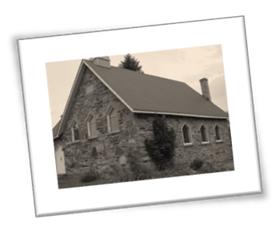 St. Stephen's Church
St. Stephen's Church
2072 Buckslide Rd.
In 1999, the Anglican Diocese deconsecrated a number of primarily rural churches throughout Ontario. St. Stephen's Church, in the former Stanhope Township, was one such church. The Township collaborated with the newly-incorporated Friends of St. Stephen's Church to take over and maintain the cemetery while the Friends took over the church.
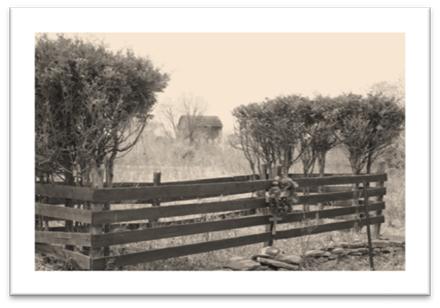 Mason Family Cemetery
Mason Family Cemetery
Boshkung Lake Rd., 2 km from Hwy 35 at T-junction
In 1861 Thomas Mason made his way to Stanhope Township after a remarkable series of escapades. His family farmed the same land for 134 years and along the way experienced success and tragedy. On the corner of the property a small plot holds the remains of three small boys who died in the 1860s and 1870s.
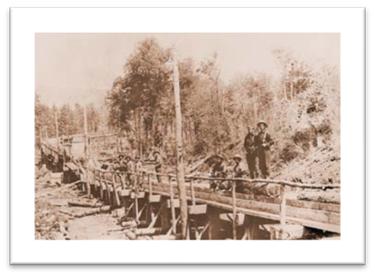 Gilmour Tramway
Gilmour Tramway
One of the greatest schemes in Ontario's logging history was the Gilmour Tramway, a complicated series of log chutes and jackladders built to get Algonquin white pine to mill all the way down at Trenton. Starting in the village of Dorset and travelling through lakes in Stanhope, the tramway was the crucial link in a 445 kilometre journey. The epic story was the topic of two books, When Giants Fall and The Gilmour Tramway. Visit the Dorset Heritage Museum to see a fabulous scale model of the tramway.
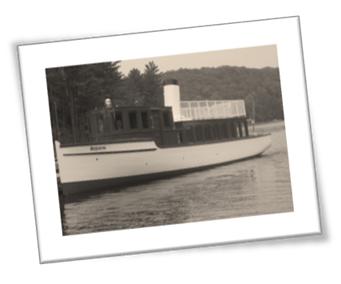
The S.S. Bigwin
1090 Main St., Dorset
The Bigwin Steamship was rescued from a watery grave and restored over an 8-year period by the Lake of Bays Marine Museum. The S.S. Bigwin was one of the last remaining steam vessels to operate on Lake of Bays and was officially re-launched in 2010. The permanent home of the S.S. Bigwin is in Dorset at the original wharf and property used by the Huntsville and Lake of Bays Navigation Company. Thousands of dollars were donated by the community toward this historic preservation project and a variety of themed cruises can be enjoyed throughout the summer season.
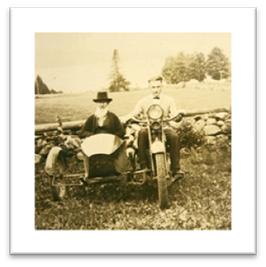 Stanhope Heritage Driving Tour
Stanhope Heritage Driving Tour
The driving tour is a dandy little self-guided exploration of some of the sites listed here, with photos and brief explanations including what's private property and where you can get out for a stretch. Get a .pdf copy here.
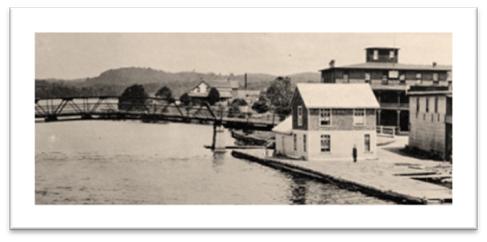 Dorset Humpback Bridge
Dorset Humpback Bridge
Main St., Dorset
The original bridge spanning the narrows in Dorset was built in 1895 and collapsed in 1905. The current arched, single-lane bridge was built by Western Bridge & Equipment in 1914 and has remained vitually unchanged since then. It's arched or "humpback" shape was to allow the passage of boats such as the S.S. Iroquois. The bridge is an iconic symbol of the village of Dorset and its history.
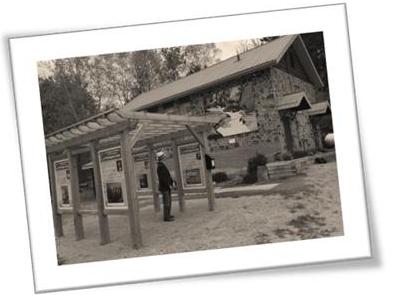 Group of Seven
Group of Seven
3979 Highway 60, Oxtongue Lake
Many notable artists found inspriation in the stunning and rugged landscapes of Haliburton and Muskoka. Among these artists were members of the Group of Seven. Franz Johnson's family lived in the village of Dorset and in tribute, the Dorset Museum is home to three outdoor Johnson murals as part of the tours of the Group of Seven Outdoor Gallery.
A.J. Casson spent a lot of time in the area, painting many images up and down what's now Hwy 35. Casson's deep and long-standing connection to Oxtongue Lake is honoured in an outdoor display at the Oxtongue Lake Community Centre on Hwy 60.
Buckslides
One of the most spectacular cascades of water in Haliburton is Buckslides, named after Daniel Buck owner of a lumber mill at the end of Kushog Lake where a timber slide was constructed to navigate the tumultuous waterway. Buck's timber slide was known casually as "Buck's slide" and the road to Buck's slide eventually became Buckslides Road. Buckslides, painted by Group of Seven member A.J. Casson in 1938, is best viewed from the road, which allows observers to avoid private property.
Stanhope Pioneer Cairn and Cemetery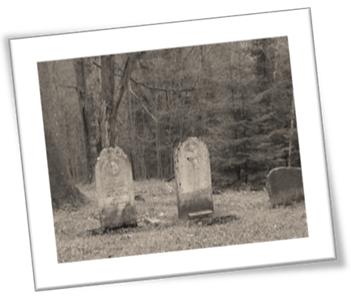
Boshkung Lake Rd., 100m off Hwy 35, at the speed sign
Tucked away from passersby on Boshkung Lake Road is the final resting place of a handful of early Boshkung settlers. Little is known about why this small group of unrelated folks was buried in this particular location; folklore says they were moved from another nearby location. Behind the painted rock just off Hwy 35 is a stone cairn with a plaque of names. Up the hill is an unremarkable space with remnants of a scattering of head tones.
Stone fences
The most famous crop in all of Haliburton County is rocks! Early farmers had to clear trees and pry stones from the land before they could plant crops to survive. That's why we call their life "hardscrabble". Hand-built stone fences are a silent testament to our heritage and can be seen all over the area, with a special few on Boshkung Lake Road, where they were built in the 1860s. Keep an eye out when you're driving around.
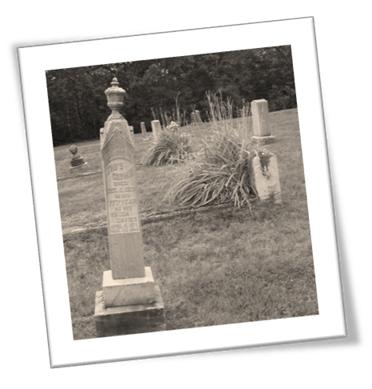 Cemeteries
Cemeteries
A wee wander through our local burying grounds will provide a bit of time travel. Choose from St. Stephen's on Buckslides Rd.; Zion United in Carnarvon; St. Peter's at Maple Lake; or Maple Lake United near the airport. You can find these locations on the County of Haliburton's interactive map.
Hawk Lake Log Chute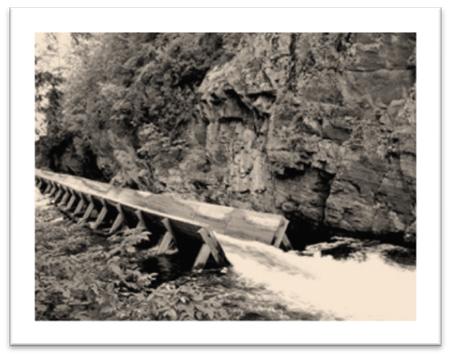
1584 Big Hawk Lake Rd.
The last of its kind in Ontario, this iconic landmark was first built in 1870 and fully restored in 2005 along with explanations of the who, what and why of an industry that at one time employed most of the men in Upper Canada. You'll never see anything like this beautiful and rugged site. Click here to go to the chute's website.
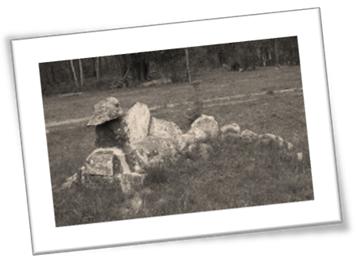 Camp Calumet Dragons
Camp Calumet Dragons
1544-1554 Boshkung Lake Rd.
Heritage comes in all shapes and sizes and in this case, they're big and fun! Calumet Camp was a children's camp for some 50 years and although it's now divided into private cottage lots, the infamous dragons still stand guard.
Oxtongue Lake Schoolhouse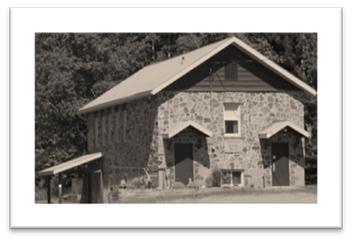
3979 Highway 60, Oxtongue Lake
In 1951 local resident Frank Hubbel donated land for a schoolhouse. The charming little school was sided with stone and had the usual Girls and Boys entrances. In the 1960s when one-room schools were being amalgmated into larger educational systems, the school was taken over by a citizens group. The municipality took it over in the 1970s and its use as a community centre has increased dramatically, the most recent augmentation being an outdoor exhibit honouring the community's relationship with the Group of Seven, and A.J. Casson in particular.
Two Museums
Dedicated volunteers in each of Stanhope an Dorset collect, preserve and display their respective histories in each of the Stanhope Museum and the Dorset Museum. They're different from each other in size and scope - and well worth a visit.
